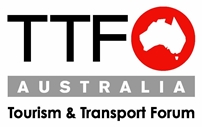
Unlocking Western Sydney’s tourism potential
The potential for Western Sydney to become the engine room of the NSW visitor economy is one step closer to being realised with the release today of the Western Sydney Visitor Economy Strategy 2017/18-2020/21, the Tourism & Transport Forum Australia (TTF) said today.
TTF Chief Executive Margy Osmond said the collaboration between the NSW Government, the Western Sydney Business Chamber and Western Sydney Business Connection was what’s needed to begin to unlock the tourism potential of the region.
“The visitor economy is Western Sydney’s sleeping giant,” Ms Osmond said.
“The region has all the ingredients to become one of Australia’s ‘must-visit’ destinations, but has lacked a unified approach between government, industry and the community to managing and marketing the area and to developing a single, long-term destination management strategy and plan.
“The Western Sydney Visitor Economy Strategy is an extremely encouraging first step to bringing together the key stakeholders that can provide the direction Western Sydney’s tourism sector been crying out for.”
Ms Osmond welcomed the Strategy’s focus on growing investment and visitation to the region through its nine broad strategic directions, including securing and growing business events, developing destination awareness and maximising the potential to capaitlise on emerging markets such as medical related tourism.
“Western Sydney undoubtedly has the potential to be ‘the next big thing’ in Australian tourism,” Ms Osmond said.
“It is home to Australia’s most culturally diverse population, while the Indigenous population of Greater Western Sydney is one of the largest single Indigenous communities in Australia.
“It boasts a range of cultural, sporting, natural and recreational assets that can’t be found anywhere else in the country.
“Western Sydney has an incredible story to tell, but more importantly an incredible story to sell, and the Western Sydney Visitor Economy Strategy is absolutely fundamental to growing the region’s visitor economy not just until 2021, but well beyond.”
